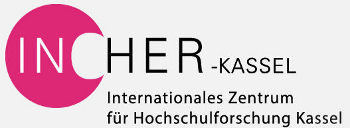In an earlier post, I explained why I’m not a big fan of huge summits, ie. those typical yearly get-togethers of an academic discipline: The social function (meet and greet) by far outweighs the research function (learning of and discussing new stuff).
In spite of these feelings, I went to the annual CHER-conference in Kassel (GER). CHER is the Consortium of Higher Education Researchers, and the conference was being held for the 32nd time this year. This meant, precisely, 114 presentations and three keynote-speeches in the course of three days. Oh boy!
This flood of presentations, canalised into five parallel sections, reminded me of the DGfA-conferences: There are always at least two interesting topics in parallel time slots, so that you have to choose wisely and, nevertheless, still feel the pang of regret when the one you’re sitting in is underwhelming and you wonder how that other one might have been. The grass is always greener on the other side, I suppose.
Another thing both academic communities seem to have in common is the varying quality of the visual part of presentations, or, to put it more straight-forwardly: the still-existing PowerPoint-massacres. I thought it would be general knowledge by now that a 12-point font size or gray colours on white backgrounds are anathemas, but these are still habitually occurring faults.
A final malaise that seems to befall all yearly summits is the practice of devising an overarching topic, that can mean anything and turns out to mean nothing at all for most presentations. The CHER-conference seemed to bring this practice (catering, I presume, to the public need of thinking that a whole academic discipline is currently focusing on one particular hot-button issue) to an ironic apex: Its motto was “Theories and Methods in Higher Education Research.” This gets quite close to the title that I would suggest for all annual summits in academia: “Current Projects and Trends in … (insert name of discipline here).” It’s honest and it’s fruitful because the term “trends” means that it should not just be descriptive, but also analytical. Unfortunately, next year’s meeting in Croatia is already occupied by another supposedly infringing topic “The Engaged University.” Isn’t that an invitation for me to do something more about my postdoctoral project? We’ll see…
In contrast to gatherings of the American Studies-tribe, the Higher Ed-researchers are much stricter on time limits: 10 minutes each for presentations and the following Q&A. This allowed for a rather neat fulfillment of the summit’s schedule, but also meant a very restrained atmosphere during question time.
Still, this conference, as so many others before, served its purpose well, if its purpose was socialising and becoming familiar with people of a field in which I’m still a newcomer. And that’s somethine, I guess.

